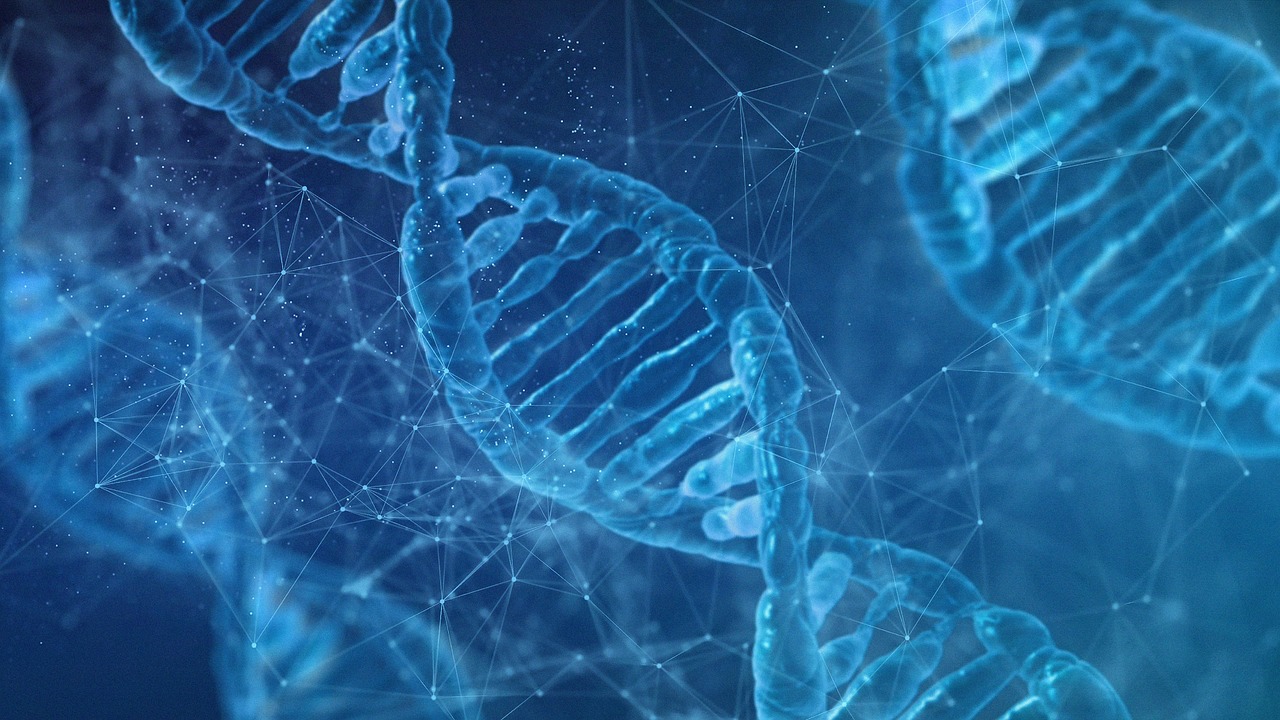Role of Restriction Enzymes in Gene Cloning
Restriction enzymes protect bacteria from invading bacteriophages in the natural world by slicing through foreign DNA. This DNA slicing is accomplished by the recognition of certain sequences at specific locations called recognition sites.
Some restriction enzymes cut the two complementary DNA strands at their recognition sites, leaving one nucleotide overhang that can be joined with a matching DNA fragment using DNA ligase. These overhanging DNA ends are referred to as sticky ends.
Recognition Sites
Researchers digest DNA with restriction enzymes as the first step in cloning a gene into a vector. This process separates the double-stranded DNA into smaller fragments with compatible ends for ligation. This method of cloning is used in a wide range of applications, from basic research to drug discovery. It is a key technique taught in molecular biology labs from high school through university.
The specific sequence of bases that a restriction enzyme recognizes to cleave the DNA is called a recognition site. Typically, this sequence is short (4-8 nucleotide pairs) and palindromic (reads the same on both strands of the DNA). The recognition sites in the DNA are called restriction sites because the enzyme can only bind to, or restrict, the sequence at those locations.
Each restriction enzyme has its own unique sequence of recognition sites. The recognition sequences trigger the enzyme to cleave the sugar-phosphate backbone of the DNA at these sites. This leaves behind short, single-stranded DNA fragments with a region of single-stranded overhanging bases. The overhanging regions are referred to as cohesive or sticky ends.
Bacteria make restriction enzymes in order to protect themselves from viruses that infect them. When a virus injects its DNA into bacteria, the enzymes of the bacterium cut the foreign DNA to prevent it from entering the cell. Scientists can use these same enzymes to cleave DNA from other species and assemble it into a plasmid or other bacterial vector.
Unlike restriction enzymes made by bacteria, which are designed to recognize a DNA sequence in its entirety and cleave it at a single point, the restriction enzymes created for gene cloning use the specific recognition sequence to cleave DNA in multiple places. The ability of these enzymes to predictably cleave DNA and leave behind fragments with compatible ends for ligation is what makes them so useful in gene cloning.
It is important to select the correct one for a given experiment to ensure that a restriction enzyme will work well. Ideally, the restriction enzyme will be sensitive to the recognition site(s) in the DNA to be digested, and the enzyme will not bind to any of the adjacent bases that are also methylated by host proteins.
Cleavage
The cleavage process is one of the most important functions of restriction enzymes, and it also is an essential step in gene cloning. When restriction enzymes bind to DNA, they create double-stranded breaks in the DNA or nucleotide chain. The enzymes then cut the DNA at the recognition sequence, generating DNA fragments with either blunt or sticky ends. The cleavage process is crucial in gene cloning because it allows scientists to recombine DNA fragments and plasmids and insert genes into a host bacterium to produce the desired protein.
A plasmid is a small circular piece of bacterial DNA containing the interest gene. Plasmids are used extensively in molecular biology because they can be easily isolated and inserted into bacteria to produce protein. The plasmid is usually marked with a selection marker that signals the inserted gene to be expressed in the bacteria. Then, the plasmid and gene of interest are cut with the same restriction enzymes to generate compatible DNA ends.
DNA consists of two complementary strands that spiral around each other in a double helix. The strands are held together by the hydrogen bonds formed between bases on each side of the DNA helix. Restriction enzymes recognize a specific symmetrical sequence in the DNA and then cleave it at the recognition site. This cleavage results in DNA fragments that have protruding or sticky ends, which can bind with other complementary DNA ends to form stable Watson-Crick base pairs.
Some restriction enzymes, such as SmaI, cut straight through the DNA strands at their recognition sites, generating DNA fragments with blunt or flat ends. Other restriction enzymes, such as EcoRI, cut through the DNA strands at nucleotides that are not opposite each other, creating DNA fragments with an overhanging nucleotide end. These sticky ends can bind with complementary DNA fragments with the help of DNA ligase enzymes.
Many restriction enzymes also protect their own DNA from cleavage by methylating it. The restriction enzyme does not recognize the methylated DNA, and it remains protected during genome replication. This is important because it prevents the DNA from being cleaved by restriction enzymes during subsequent replications.
Ligation
The ability of restriction enzymes to cut DNA precisely at defined locations allows scientists to recombine small segments of the genetic material. This process is known as cloning and is the basis of many of the methods used in molecular biology research. The technique is widely practiced and taught at all levels of scientific education. Several commercial and academic resources are available for researchers to use in obtaining the necessary DNA fragments and vectors to perform cloning.
DNA contains two complementary strands that spiral around each other in a double helix. Restriction enzymes cut DNA molecules to produce nicks in the double helix. These nicks are then joined together by DNA ligase to form a single molecule of DNA. The ends of the DNA molecules are then exposed, and the molecule is ready to be inserted into a vector for further manipulation.
Different restriction enzymes cut DNA at varying locations, and the method by which they cut DNA can affect the final results of the cloning experiment. For example, some restriction enzymes cut through both DNA strands and leave blunt ends (like cutting a log with an ax), while others cleave the DNA at slightly different points in each strand to create sticky ends. DNA ligase can then easily bond with the DNA ends.
Prokaryotic organisms, including bacteria such as Escherichia coli, produce the most restriction enzymes. The enzymes are named for the genus, species, or strain of the bacteria from which they were isolated. The discovery of restriction enzymes enabled scientists to isolate DNA segments from prokaryotic organisms and recombine them with other pieces of DNA. This was the beginning of gene cloning, and the process is now a core tool in molecular biology research.
Scientists must carefully select the restriction enzymes they will use in a cloning experiment. They must ensure that the restriction enzymes will predictably cleave the DNA to be inserted and produce nicks with ends compatible with DNA ligase. They must also ensure that the restriction enzymes they select do not contain recognition sites within the DNA sequence to be inserted and examine the sensitivity of the restriction enzymes to host methylation.
Recombination
Recombination is the mechanism by which genetically modified DNA mixes with native, wild-type DNA in a living cell to create new genotypes. Recombination is a powerful tool for genetic engineering, as it allows scientists to introduce a desired mutation into an organism while maintaining control over the exact sequence of the gene being introduced.
The gene of interest is extracted from an organism and cut into fragments using restriction enzymes. The same restriction enzymes are then used to cut a carrier, commonly known as a vector, which carries the fragments of DNA into the host organism. The vector and the DNA fragments of interest are then joined together using a ligation procedure. The DNA ligase used in this process is capable of joining DNA fragments with complementary ends, which are then called sticky or blunt ends.
When the DNA ends are joined, they form stable Watson-Crick base pairs, and the resulting molecule is referred to as a recombinant DNA molecule. The recombinant DNA can then be inserted into a host organism to produce the protein the mutant gene is expected to encode.
Recombinant DNA can be introduced into a host strain using different methods, depending on the method of genetic engineering being employed. The most common approach involves placing the recombinant DNA into a circular, self-replicating DNA vessel known as a plasmid. The plasmid vector can then be introduced into the host organism, causing it to take up the foreign DNA and produce hundreds of identical copies of the mutant gene.
Alternatively, the recombinant DNA can be introduced into the host organism by directly selecting the desired phenotype. This technique is known as homologous recombination. When homologous recombination occurs in mitotic cells, the sister chromatids of a chromosome are able to join together in specific regions with very limited or no sequence similarity. This type of recombination is often facilitated by linkage to an adjacent selectable marker, which can be used to identify cloned DNA in the genome of a host strain.
Many DNA cloning procedures involve the use of restriction enzymes to cut and then join the DNA fragments of interest into a vector, such as a bacterial plasmid. However, some of the restriction enzymes used in these procedures can generate non-compatible DNA overhangs on both the vector and the inserted gene. This can limit the utility of these restriction enzymes or require the additional step of manually engineering the overhangs on both the vector and the gene insert to ensure they are compatible with each other, a procedure called DNA double-crossing.




